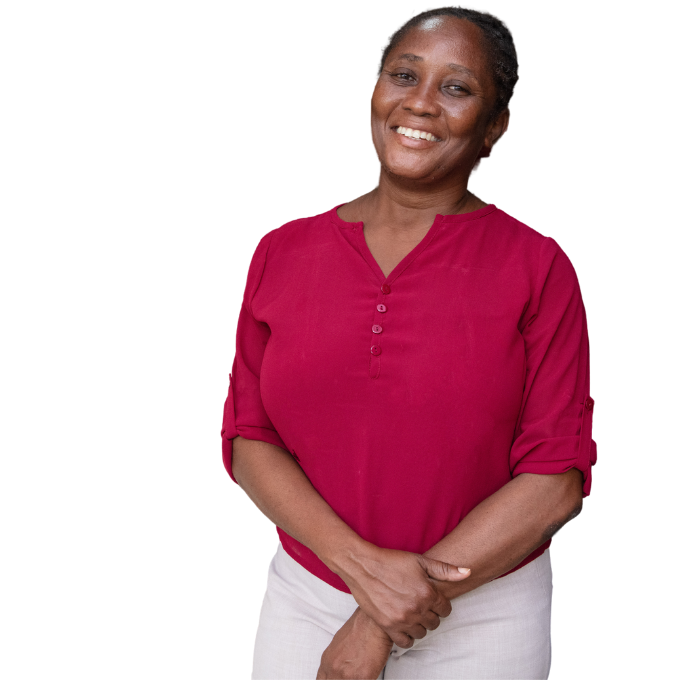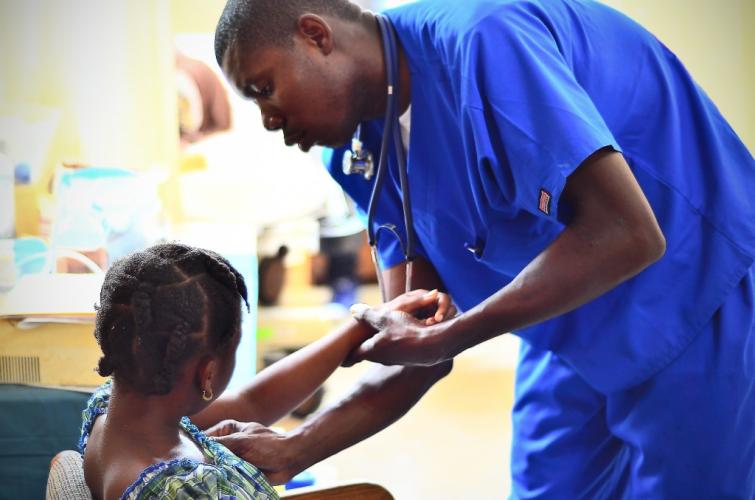“We never give up on our patients. We are proud of our mission, which is to serve the most vulnerable.”
Your donation can help Dr. Clermont and our entire staff care for more patients than ever before.


Chikungunya “My wrists hurt and I have a headache,” nine-year-old Marceline says to Dr. Dubreus, shivering with pain. She continues, “My mother, uncle, sister, and cousin have all had this.” Dr. Dubreus looks at Marceline sympathetically, knowing that she likely has the virus that has recently affected the lives of so many in the Fond des Blancs community. He orders a blood test, but it seems almost unnecessary at this point. Dr. Dubreus is almost positive that Marceline has chikungunya.
Virus in Haiti This mosquito-borne viral disease has not been seen before in the Western Hemisphere but is now spreading rapidly in Haiti and throughout much of the Caribbean. A lack of prior immunity is compounding the rate of spread of this already virulent disease. It is now prevalent enough that many simply refer to it as “the fever,” alongside its other nickname, “the Bone Breaker”. “Chikungunya” means “that which bends up” in the language of the Makonde in southern Tanzania, the virus’ point of origin. This name refers to the contorted posture often assumed by the infected as they experience excruciating arthritic joint pain. Additional symptoms include fever, rash, and vomiting. The virus is not deadly but has the ability to incapacitate people for up to a week.
More than 27,000 cases have been confirmed in Haiti since the Haitian Ministry of Public Health officially announced the chikungunya epidemic in early May. The high infectiousness and severe symptoms of this virus have diminished the workforce capacity, and some have reported that even busy Port-au-Prince seems to have slowed as more and more people are unable to work. Furthermore, the virus has infected many physicians and nurses who would otherwise provide care for chikungunya patients.
St. Boniface Like most of Haiti, SBH and the surrounding Fond des Blancs community has not been spared. Monthly patient visits to the St. Boniface emergency room have risen sharply during the past few months. Between January and April 2014, SBH had a monthly average of 134 emergency room visits. In the month of May, emergency room visits skyrocketed to 374. And, unlike many infectious diseases, chikungunya seems to infect healthy adults just as frequently as the sick or elderly.
“We have many children and adults with [chikungunya],” says Pascale Paul, one of our pediatric and neonatal nurses. She explains, “Infected patients often present with a rash, fever, headache and debilitating pain throughout the body. There is no cure, so we hydrate in-patients with IV fluids and administer a vitamin B complex to alleviate the symptoms.”
Our physicians are working tirelessly to care for this new influx of patients, but they are susceptible to infection as well. According to Dr. Pierre, SBH Director General, upwards of forty staff members have fallen ill with chikungunya, with an average of ten to twelve infected at any given time. The staff has compensated by rallying together and volunteering for additional shifts in order to continue to provide high-quality care to Fond-des-Blancs and the surrounding areas. Some employees have continued to work in spite of the pain, exemplifying the dedication and passion of SBH for the Fond des Blancs community.
Community Health The community health department is responsible for a significant part of SBH’s response to the chikungunya epidemic. Within this department, we employ seventy-two community health workers who play a critical role in educating the community about the disease. By providing education on treatment and prevention, these front-line workers have been able to raise awareness of chikungunya. This effort will eventually slow the flood of emergency room visits as people learn to identify and alleviate the symptoms on their own.
Moving Forward Dr. Pierre maintains that the prognosis is good despite the growing line outside the emergency room as more and more people like Marceline seek medical care. “Because chikungunya confers immunity, meaning that you can’t be infected twice, we expect the number of infections to taper off over time. Fewer and fewer people will suffer because of it.” Eventually, life will return to normal here in Fond des Blancs and the rest of Haiti. Until then, SBH staff and physicians will continue to meet the challenge of providing health care for those who fall ill with “the fever.”
Your donation can help Dr. Clermont and our entire staff care for more patients than ever before.
